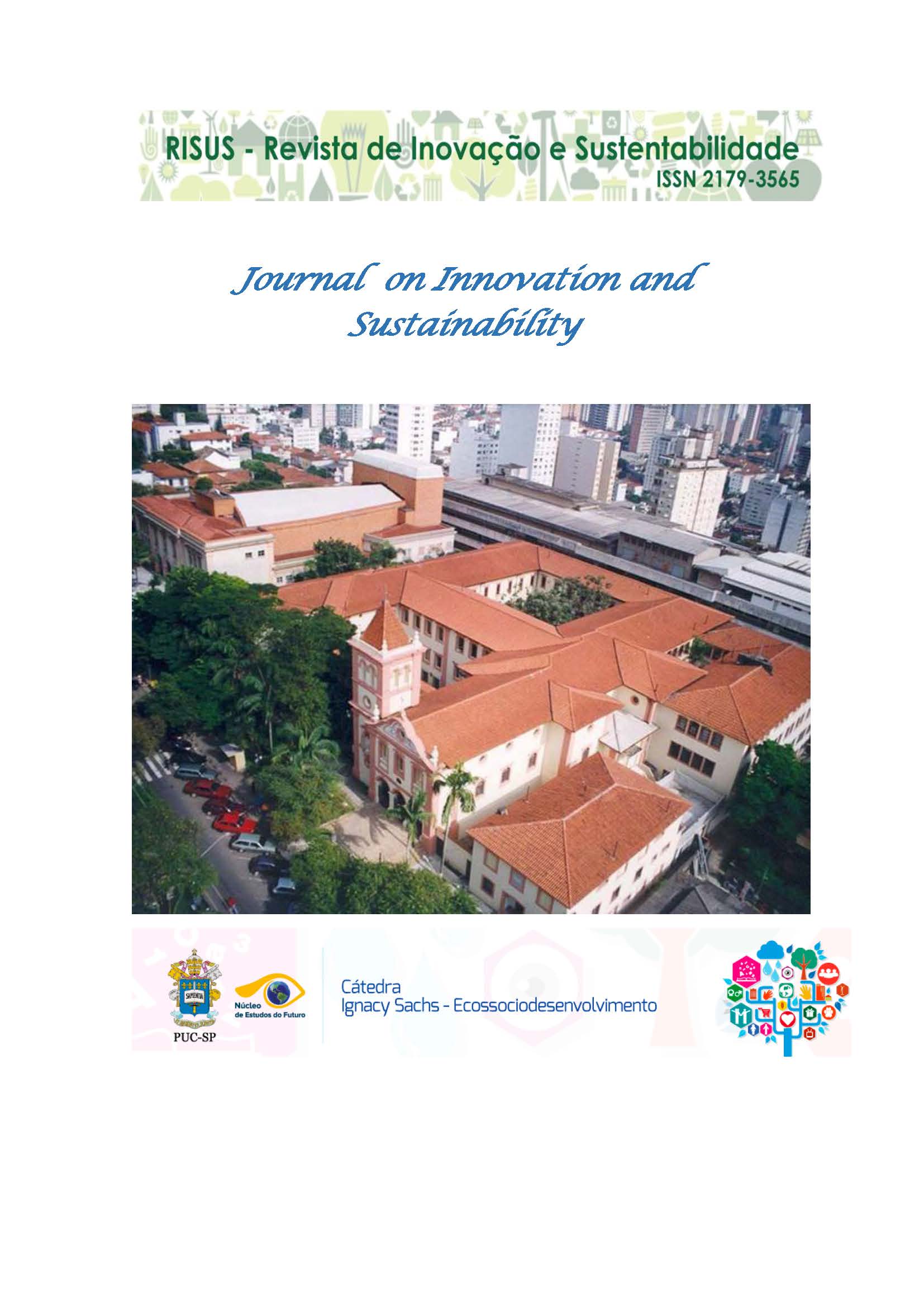Walking recognition
a biopolitical approach
DOI:
https://doi.org/10.23925/2179-3565.2023v15i1p143-153Keywords:
Artificial Intelligence, Biopolitics, Discourse, Prediction, InterventionAbstract
This article intends to analyze how walking recognition operates in a mechanical system that deals with uncertainty and the use of it to create biopolitical power. The objectives are to identify the physics theory how they connect with the philosophical approach. The hypothesis is that this system works in a structure identical to quantum physics laws. New algorithmic techniques have led to the exercise of Foucauldian biopolitical disciplinary power over bodies in the present, using uncertainties about the future as a raw source for defining interventions. Algorithmic prediction, and the panopticon model, are rooted in the desire to understand and exert power over bodies. It was found that, a predictive algorithm implies distinct temporal lines and expands time, which resonates with Schrödinger's model of possibilities and uncertainties, particularly when the observer's intervention can alter the state of affairs. While the past offers limited raw material for manipulation (as in the book "1984"), the future provides an inexhaustible speculative source of hypothetical scenarios (as in Isaac Asimov's book "Foundation") for AI, potentially diminishing the centrality of human self-determination over lives.
References
BOHR, N., (1913) I. “On the constitution of atoms and molecules”. The London, Edinburgh, and Dublin Philosophical Magazine and Journal of Science, 26:151, 1-25. DOI: 10.1080/14786441308634955. (accessed on December 20, 2022)
BORGES, J. L., “Sobre o Rigor na Ciência”. trad. de José Bento, Assírio e Alvim, 1982. [portuguese]
BORGES, J. L., “The Aleph,” translation by Norman Thomas. Available at. [web.mit.edu/allanmc/www/borgesaleph.pdf]
DAVIS, J., HSIEH, YH. & LEE, HC, “Humans perceive flicker artifacts at 500 Hz”. Sci Rep 5, 7861, 2015. [doi.org/10.1038/srep07861]. (accessed on December 20, 2022)
DENOEUX, T; DUBOIS, D., PRADE H. “Representations of Uncertainty in Artificial Intelligence: Probability and Possibility. A Guided Tour of Artificial Intelligence Research Volume I: Knowledge Representation, Reasoning and Learning”. Springer International Publishing, pp.69-117, 2020, https://hal.science/hal-02921351/document (accessed on December 20, 2022)
ELKINS, C., “Isaac Asimov’s ‘Foundation’ series: historical materialism distorted into cyclical psycho-history”. Science Fiction Studies, vol. 3, n 1, 1976, pp. 26-36.
FOUCAULT, M., “História da Sexualidade I. A vontade de saber”. São Paulo, Paz e Terra, 2014. [portuguese]
FRIEDERICH, SIMON AND PETER W. EVANS, "Retrocausality in Quantum Mechanics", The Stanford Encyclopedia of Philosophy (Winter 2022 Edition), Edward N. Zalta & Uri Nodelman (eds.). Available at [plato.stanford.edu /archives/win2022/entries/qm-retrocausality/].
GARNELO, M., SHANAHAN, M, “Reconciling deep learning with symbolic artificial intelligence: representing objects and relations, Current Opinion in Behavioral Sciences”. Volume 29, 2019.
GUTIERREZ, A. G. et al, “Inteligência artificial: sociedade, economia e Estado”. São Paulo: Revista dos Tribunais, Thomson Reuters, 2021. [portuguese]
HASSABIS, D., “Artificial Intelligence: Chess match of the century”. Nature 544, 413–414 (2017). [doi.org/10.1038/544413a]. (accessed on December 20, 2022)
HEISENBERG, W., 1927, “Ueber den anschaulichen Inhalt der quantentheoretischen Kinematik and Mechanik”, Zeitschrift für Physik, 43: 172–198. p. 174-175. English translation in Wheeler and Zurek 1983: 62–84. WHEELER, J.A. and W.H. ZUREK (eds), Quantum Theory and Measurement, Princeton, NJ: Princeton University Press, 1983.
HILGEVOORD, JAN; UFFINK, JOS., “The Uncertainty Principle”. The Stanford Encyclopedia of Philosophy (Winter 2016 Edition), Edward N. Zalta (ed). Available at [plato.stanford.edu/archives/win2016/entries/qt-uncertainty/]. (accessed on December 23, 2022)
JACKSON, E., & MENDOZA, C. (2020). “Setting the Record Straight: What the COMPAS Core Risk and Need Assessment Is and Is Not”. Harvard Data Science Review, 2(1). [doi.org/10.1162/99608f92.1b3dadaa]. (accessed on December 20, 2022)
LECOURT, D., “Para uma crítica epistemológica”. 2ª. Ed. Lisboa. Assírio & Alvim, 1980. [portuguese]
MISES, L., Interdisciplinary Journal of Philosophy Law and Economics, vol. 5, núm. 1, pp. 11-19, 2017. DOI: 10.30800/mises.2017.v5.35. (accessed on December 20, 2022)
NOLEAK. “NoLeak company Behavioral Analysis.” Available at: [www.noleakdefence.com/?lang=pt]. [portuguese] (accessed on December 23, 2022)
PUEO, B, “High speed cameras for motion analysis in sports science”. Journal of Human Sport and Exercise, vol. 11, núm. 1, 2016, pp. 53-73. Universidad de Alicante. Alicante, España. Available at [www.redalyc.org/pdf/3010/301049620005.pdf.]. (accessed on December 20, 2022)
ROVELLI, C., “The Order of Time”. Nova York: Riverhead, 2018.
ROVELLI, C., VIDOTTO, F. “Covariant Loop Quantum Gravity. An Elementary Introduction to Quantum Gravity and Spinfoam Theory”. Cambridge: Cambridge University Press, 2015.
RUCK, P, “Photoreceptor cell response and flicker fusion frequency in the compound eye of the fly, lucilia sericata (meigen)”. The Biological Bulletin. June 1961. Volume 120, Number 3. (accessed on December 20, 2022)
SILVER, D., HUANG, A., MADDISON, C. et al. “Mastering the game of Go with deep neural networks and tree search”. Nature 529, 484–489 (2016). [doi.org/10.1038/nature16961]. (accessed on December 23, 2022)
STEINHOFF, W. R., “George Orwell and the origins of 1984”. University of Michigan Press, 1975.
TAYLOR, D., (Ed.). “Michel Foucault: Key Concepts” (pp. 159-172). Acumen Publishing. doi:10.1017/UPO9781844654734.012. (accessed on December 23, 2022)
TURING, A. M. I., “Computing machinery and intelligence”. Mind, Volume LIX, Issue 236, October 1950, Pages 433–460. [doi.org/10.1093/mind/LIX.236.433]. (accessed on December 23, 2022)
VALOR. “Futuro previsto em ‘Minority Report’ para 2054 já chegou”. Available at [valor.globo.com/publicacoes/suplementos/noticia/2022/11/28/futuro-previsto-em-minority-report-para-2054-ja-chegou.ghtml]. [portuguese]
VOUGHT, R. “Draft Memorandum for the Heads of Executive Departments and Agencies: Guidance for the Regulation of Artificial Intelligence Applications”. US Office of Management and Budget. 7 Jan. 2019. Available at [www.whitehouse.gov/wp-content/uploads/2020/01/Draft-OMB-Memo-on-Regulation-of-AI-1-7-19.pdf]. (accessed on December 23, 2022)
WANG, CHENGYI et al., “Neural Codec Language Models are Zero-Shot Text to Speech Synthesizers”. Available at: [https://arxiv.org/abs/2301.02111]. (accessed on December 23, 2022)
WHEELER, J.A., W.H. ZUREK (eds), 1983. “Quantum Theory and Measurement, Princeton”. NJ: Princeton University Press.

Downloads
Published
Issue
Section
License
This Journal is licensed under a Creative Commons Attribution-Non Commercial-No Derivers 4.0 International license.
1.The author (s) authorize the publication of the article in the journal;
2.The author (s) warrant that the contribution is original and unpublished and is not in the process of being evaluated in other journal (s);
3. The journal is not responsible for the opinions, ideas and concepts emitted in the texts, as they are the sole responsibility of its author (s);
4. The editors are entitled to make textual adjustments and to adapt the articles to the standards of publication.

